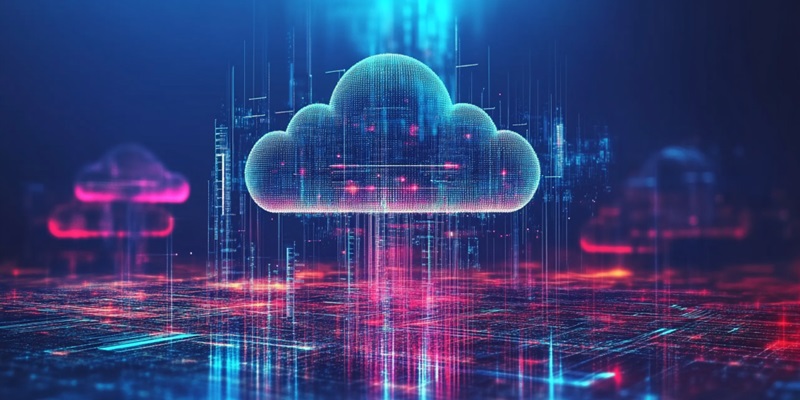The rapid integration of artificial intelligence (AI) into cloud computing has fundamentally transformed how businesses operate, offering unprecedented efficiency, security, and innovation. Leveraging AI in the cloud enables companies to automate complex processes, optimize resource management, and enhance data security, among other benefits. AI’s cognitive abilities and advanced data analytics capabilities help simplify the challenges associated with traditional cloud computing, making it more accessible and effective for businesses of all sizes. By embedding AI algorithms within cloud services, businesses can harness predictive analytics, real-time data processing, and intelligent automation, leading to smarter decision-making and a more agile business environment. As companies accumulate increasing amounts of data, AI-driven cloud solutions provide the necessary tools to manage, analyze, and extract valuable insights from this data, driving business growth and fostering innovation.
Enhancing Data Security
In the realm of data security, AI offers significant advancements that traditional cloud computing methods struggle to achieve. AI algorithms can rapidly analyze vast amounts of security data to identify patterns and detect potential threats. This proactive approach to security not only identifies anomalies faster but also helps in predicting and preventing cyber-attacks before they occur. By continuously learning from new data, AI models adapt and improve their threat detection capabilities over time, ensuring more robust protection for business data. For instance, machine learning models can identify and flag unusual login activities or data access patterns that might indicate a security breach, enabling quick and effective responses from security teams.
Furthermore, AI-driven security systems provide businesses with automated threat response capabilities. In the event of a cyber attack, AI can swiftly prioritize and address the most critical threats, minimizing potential damage. This automation reduces the reliance on human intervention and allows cybersecurity professionals to focus on strategic initiatives and refining security policies. Additionally, AI enhances data encryption processes by automating the creation of secure encryption keys and managing their lifecycle, ensuring that sensitive data remains protected both at rest and in transit. By leveraging AI for data security, businesses can maintain higher levels of protection and build trust with their clients.
Automating Disaster Recovery
AI is also revolutionizing the way businesses approach disaster recovery by automating and streamlining processes to ensure minimal disruption and swift data restoration. Traditionally, disaster recovery involved manual procedures, which were time-consuming and prone to errors. With AI, businesses can automate the entire recovery process, from assessing the extent of data loss to executing recovery plans. AI systems can quickly evaluate which data is critical for business operations and prioritize its recovery, reducing downtime and ensuring that essential functions resume as soon as possible. This rapid response is crucial in minimizing the financial and operational impact of data breaches or system failures.
Moreover, AI’s predictive capabilities play a vital role in disaster recovery planning. By analyzing historical data and identifying patterns, AI models can predict potential system failures or risks, allowing businesses to take preemptive measures. For example, AI can forecast hardware failures or identify vulnerabilities in software applications, enabling IT teams to address these issues before they escalate into significant problems. This proactive approach not only enhances system resilience but also ensures business continuity, as potential disruptions can be mitigated before they impact operations. In summary, AI-driven disaster recovery systems provide businesses with a robust, efficient, and reliable way to manage and recover from data loss incidents.
Boosting Collaboration and Project Testing
AI significantly enhances collaboration and project testing within the framework of cloud computing, making it easier for teams to work together effectively and ensure the quality of their outputs. Cloud-based collaboration platforms enable team members to access and share project data in real-time, regardless of their geographic location. AI takes this a step further by offering intelligent content recommendations, real-time document collaboration, and seamless version control. For example, AI can suggest relevant documents or information that team members might need, streamlining workflows and improving efficiency. Furthermore, intelligent version control ensures that all team members are working on the latest document version, maintaining data integrity and preventing errors or conflicts.
In the context of project testing, AI provides invaluable assistance by simulating user interactions, identifying potential flaws, and conducting load and stress tests to ensure that applications perform reliably under various conditions. AI algorithms can model a wide range of user behaviors, from common usage patterns to edge cases, providing developers with insights into how their applications will function in the real world. This comprehensive testing approach helps identify and address issues before deployment, ensuring that software applications meet performance and reliability standards. Additionally, AI-powered tools can analyze test results and offer recommendations for optimization, further enhancing the development process and reducing time to market.
Streamlining Routine Maintenance
AI is revolutionizing disaster recovery for businesses, automating processes to minimize disruption and expedite data restoration. Traditionally, disaster recovery involved manual, time-consuming, and error-prone procedures. Now, AI automates the entire recovery process, from assessing data loss to executing recovery plans. AI systems can determine which data is critical for operations and prioritize its recovery, reducing downtime and ensuring essential functions resume promptly. This rapid response is key to lessening the financial and operational impact of data breaches or system failures.
Furthermore, AI’s predictive capabilities are invaluable in disaster recovery planning. By analyzing historical data and spotting patterns, AI can predict potential failures or risks, enabling businesses to take preventative measures. For instance, AI can forecast hardware issues or detect software vulnerabilities, allowing IT teams to address them before they become major problems. This proactive stance bolsters system resilience and ensures business continuity by mitigating disruptions before they occur. In essence, AI-driven disaster recovery systems offer a robust, efficient, and reliable means of managing and recovering from data loss incidents.

